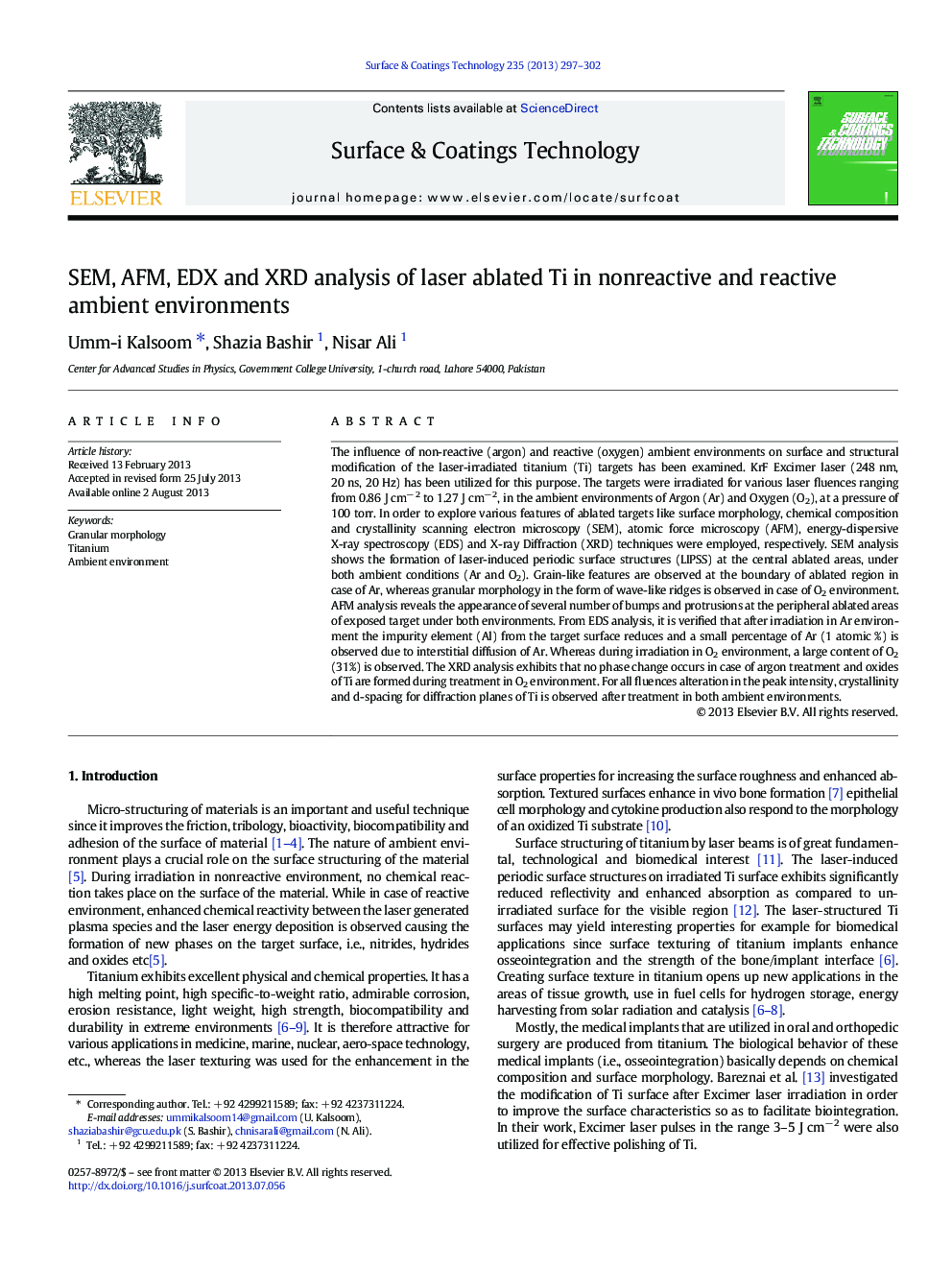| کد مقاله | کد نشریه | سال انتشار | مقاله انگلیسی | نسخه تمام متن |
|---|---|---|---|---|
| 8029216 | 1517643 | 2013 | 6 صفحه PDF | دانلود رایگان |
عنوان انگلیسی مقاله ISI
SEM, AFM, EDX and XRD analysis of laser ablated Ti in nonreactive and reactive ambient environments
دانلود مقاله + سفارش ترجمه
دانلود مقاله ISI انگلیسی
رایگان برای ایرانیان
کلمات کلیدی
موضوعات مرتبط
مهندسی و علوم پایه
مهندسی مواد
فناوری نانو (نانو تکنولوژی)
پیش نمایش صفحه اول مقاله

چکیده انگلیسی
The influence of non-reactive (argon) and reactive (oxygen) ambient environments on surface and structural modification of the laser-irradiated titanium (Ti) targets has been examined. KrF Excimer laser (248 nm, 20 ns, 20 Hz) has been utilized for this purpose. The targets were irradiated for various laser fluences ranging from 0.86 J cmâ 2 to 1.27 J cmâ 2, in the ambient environments of Argon (Ar) and Oxygen (O2), at a pressure of 100 torr. In order to explore various features of ablated targets like surface morphology, chemical composition and crystallinity scanning electron microscopy (SEM), atomic force microscopy (AFM), energy-dispersive X-ray spectroscopy (EDS) and X-ray Diffraction (XRD) techniques were employed, respectively. SEM analysis shows the formation of laser-induced periodic surface structures (LIPSS) at the central ablated areas, under both ambient conditions (Ar and O2). Grain-like features are observed at the boundary of ablated region in case of Ar, whereas granular morphology in the form of wave-like ridges is observed in case of O2 environment. AFM analysis reveals the appearance of several number of bumps and protrusions at the peripheral ablated areas of exposed target under both environments. From EDS analysis, it is verified that after irradiation in Ar environment the impurity element (Al) from the target surface reduces and a small percentage of Ar (1 atomic %) is observed due to interstitial diffusion of Ar. Whereas during irradiation in O2 environment, a large content of O2 (31%) is observed. The XRD analysis exhibits that no phase change occurs in case of argon treatment and oxides of Ti are formed during treatment in O2 environment. For all fluences alteration in the peak intensity, crystallinity and d-spacing for diffraction planes of Ti is observed after treatment in both ambient environments.
ناشر
Database: Elsevier - ScienceDirect (ساینس دایرکت)
Journal: Surface and Coatings Technology - Volume 235, 25 November 2013, Pages 297-302
Journal: Surface and Coatings Technology - Volume 235, 25 November 2013, Pages 297-302
نویسندگان
Umm-i Kalsoom, Shazia Bashir, Nisar Ali,